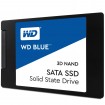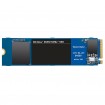I know for day to day operations you won't notice any speed enhancement on a NVME SSD over a 2.5" Sata SSD. But for tasks such as video editing is it a worthwhile upgrade and something that you would notice?
Read 2400 MB/s and Write 1750 MB/s on the NVME as opposed to Read 560 MB/s Write 530MB/s on the Sata SSD?
My basket at Overclockers UK:
Thanks
Read 2400 MB/s and Write 1750 MB/s on the NVME as opposed to Read 560 MB/s Write 530MB/s on the Sata SSD?
My basket at Overclockers UK:
- 1 x WD Blue 3D NAND 500GB 2.5" SATA 6Gbps Solid State Drive (WDS500G2B0A)= £52.99
- 1 x WD Blue SN550 500GB NVME M.2 2280 PCIe Gen3 Solid State Drive (WDS500G2B0C)= £69.95
Total: £131.64 (includes shipping: £8.70)
Thanks




